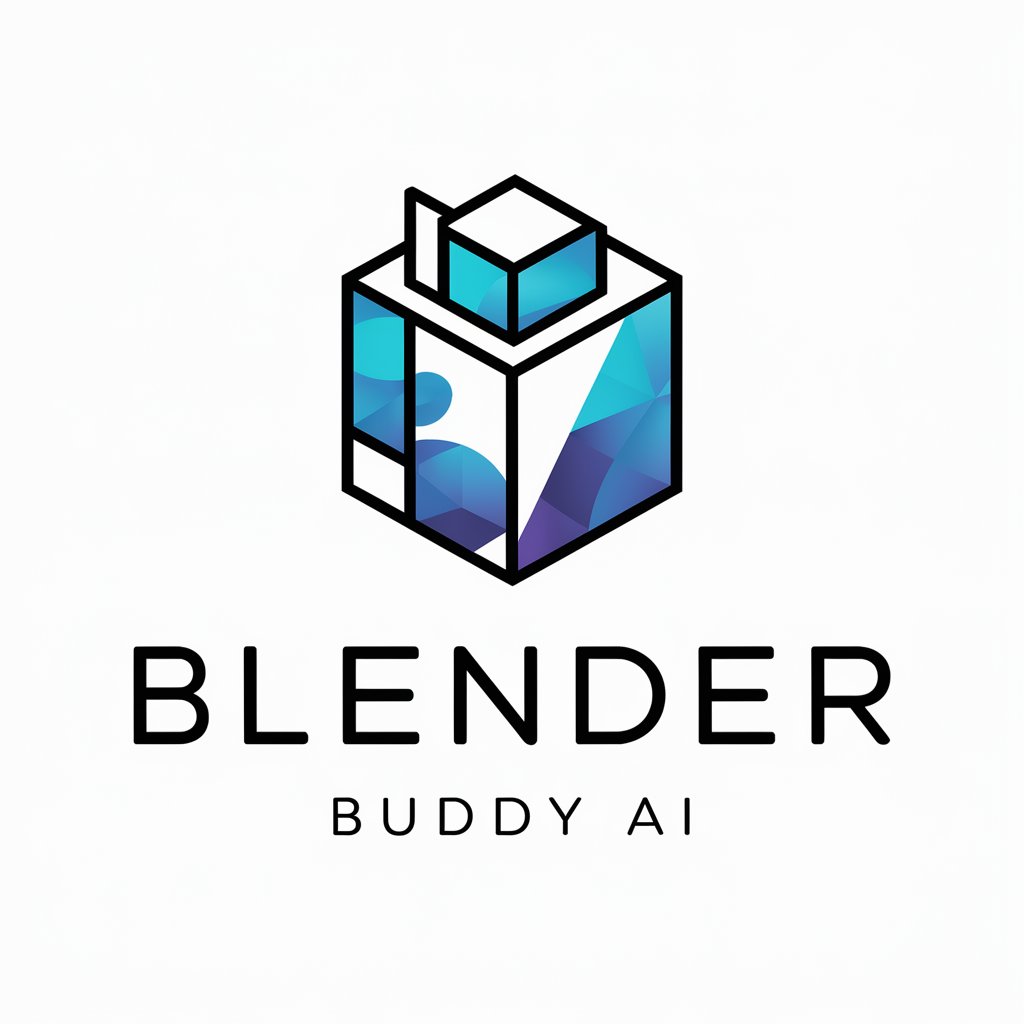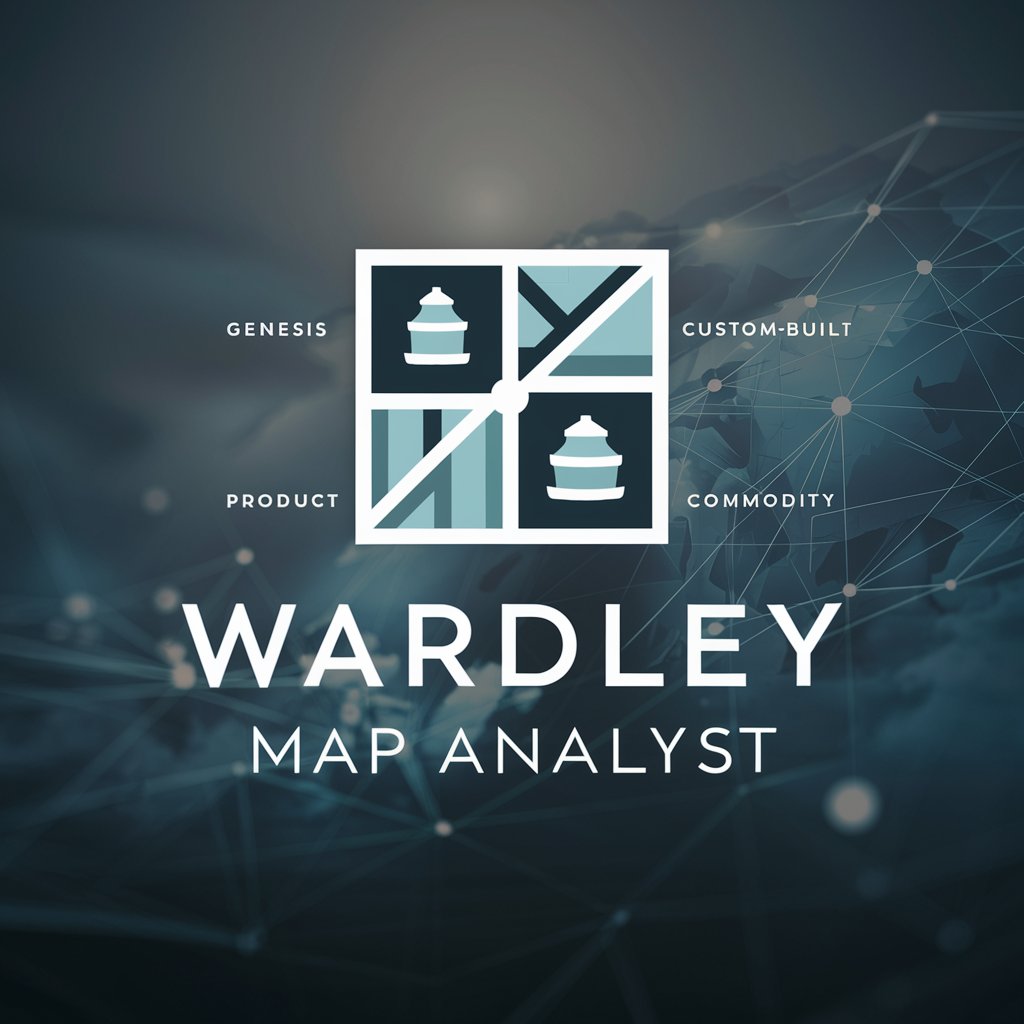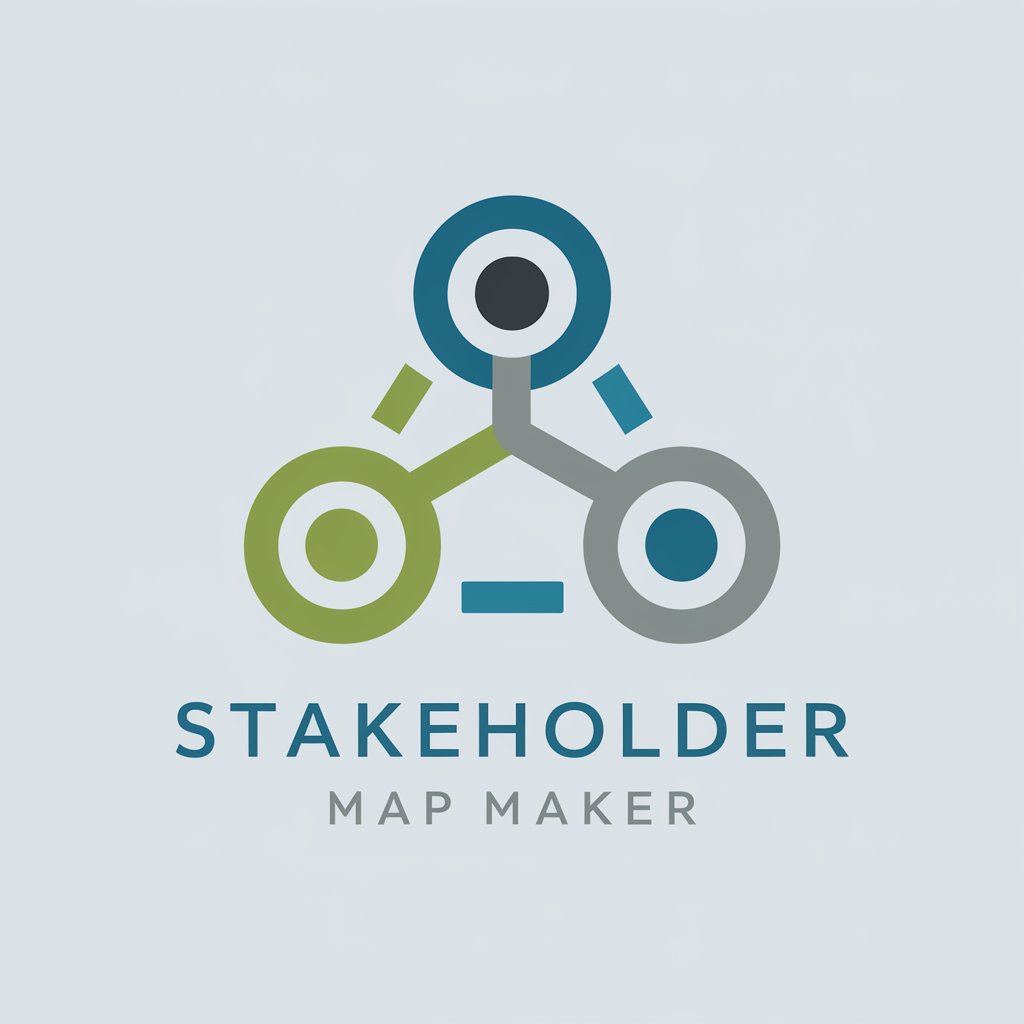
Wardley Mapping - Strategic Mapping Tool

Hello! Let's explore the strategic world of Wardley Mapping together.
AI-powered Strategy Visualization and Planning
How can Wardley Mapping help my business adapt to market changes?
Explain the OODA loop in the context of Wardley Mapping.
What are the key components of a Wardley Map?
How does understanding the evolution of components benefit strategic planning?
Get Embed Code
Understanding Wardley Mapping
Wardley Mapping is a strategic planning technique developed by Simon Wardley. It serves as a tool to visually depict the value chain and business ecosystem of an organization. The maps created using this approach represent various components of a business landscape, including user needs, market dynamics, and the evolution of products or services. These maps are crafted by first identifying customer needs and then outlining the interrelated components that support these needs. A distinctive aspect of Wardley Mapping is its use of an evolutionary axis, showing how business components evolve from novel and unique to commodity-like and standardized. This visualization aids in identifying strategic positioning, potential competitive advantages, and areas ripe for innovation or cost reduction. For instance, in a Wardley Map for a retail business, components like 'online marketplace platform' might be closer to the commodity end, while 'personalized customer experience algorithms' might be more innovative and less evolved. Powered by ChatGPT-4o。

Functions of Wardley Mapping
Strategic Visualization
Example
Visualizing the Transition from Physical to Online Stores
Scenario
A retail chain uses Wardley Mapping to navigate the shift from physical storefronts to an online marketplace. The map helps visualize the evolution of key components like supply chain management, shifting from physical logistics to digital distribution platforms.
Market Analysis
Example
Assessing Competitor Strategies
Scenario
A technology company employs Wardley Mapping to understand the strategies of competitors in the smartphone market. The map highlights the evolution of components like screen technology, where competitors are investing in next-generation display technologies.
Decision Support
Example
Evaluating Outsourcing Options
Scenario
A software firm uses Wardley Mapping to decide whether to keep its data hosting in-house or to outsource to cloud services. The map helps visualize the maturity of cloud technologies and the firm’s internal capabilities, aiding in a strategic decision.
Ideal Users of Wardley Mapping
Business Strategists
Professionals involved in strategic planning and competitive analysis will find Wardley Maps instrumental for understanding market landscapes and identifying strategic moves.
Product Managers
Product managers can use Wardley Maps to visualize the lifecycle of products, assess the impact of evolving technologies, and make informed decisions about product development.
Technology Leaders
CTOs and technology directors can leverage Wardley Mapping to chart out technology trends, assess the maturity of various technologies, and plan technology adoption strategies.

Utilizing Wardley Mapping: A Guided Approach
Initial Exploration
Visit yeschat.ai for a free trial without login, also no need for ChatGPT Plus. Familiarize yourself with the interface and explore basic mapping functionalities.
Identify User Needs
Start by defining the user needs your system or organization aims to fulfill. This forms the anchor of your Wardley Map and ensures user-centric strategy development.
Map the Value Chain
Outline the components, products, or services that contribute to fulfilling the user needs. Arrange these elements in a value chain format to visualize interdependencies.
Assess Component Evolution
Evaluate the maturity and evolution of each component on the map. Classify them from custom-built and novel to commoditized and widely available.
Strategic Analysis
Use the map to identify strategic opportunities, potential risks, and areas for improvement. Regularly update the map to reflect changes in the market or environment.
Try other advanced and practical GPTs
Unplug Solar
Illuminate Your Solar Journey with AI

MJ助手
Empowering Your Artistic Journey with AI

Who’s got my vote?
Discover your political match with AI.

Design Maestro 2000
Simplicity Meets Innovation in AI-Powered Design

Polyglot Pro
Translating with Precision and Context - AI-Powered

Your Pet GPT
Nurture Your AI Companion, Anytime, Anywhere.

Transcript Polisher
Polishing Speech to Perfection with AI

Fridge to Fork
Transforming Ingredients into Recipes with AI

Blender Buddy
Elevate Your Blender Creations with AI-Powered Support

Mr. Spock
Embrace Logic with AI-Powered Vulcan Wisdom

NeverDeny
Empowering Decisions with AI Insight

VitaCheck
Empowering Your Health with AI-Driven Guidance

Insights into Wardley Mapping
What is the core purpose of Wardley Mapping?
Wardley Mapping serves as a strategic planning tool, helping organizations to visualize their value chain, assess the maturity of components, and make informed strategic decisions.
How can Wardley Mapping aid in competition analysis?
By mapping out the value chain and market forces, it helps identify competitive advantages, potential threats, and areas where the organization can innovate or differentiate.
Can Wardley Mapping be used for team alignment?
Absolutely. It facilitates a shared understanding among team members about strategic priorities, resource allocation, and how different parts of the organization contribute to overarching goals.
Is Wardley Mapping suitable for all types of organizations?
Yes, it's versatile and can be applied across various industries and organization sizes, from startups to large enterprises, to visualize and strategize business models.
How often should a Wardley Map be updated?
Regular updates are crucial, especially when there are significant market shifts, internal changes, or technological advancements, to keep the strategy relevant and effective.





